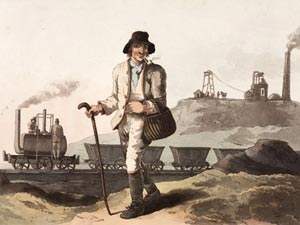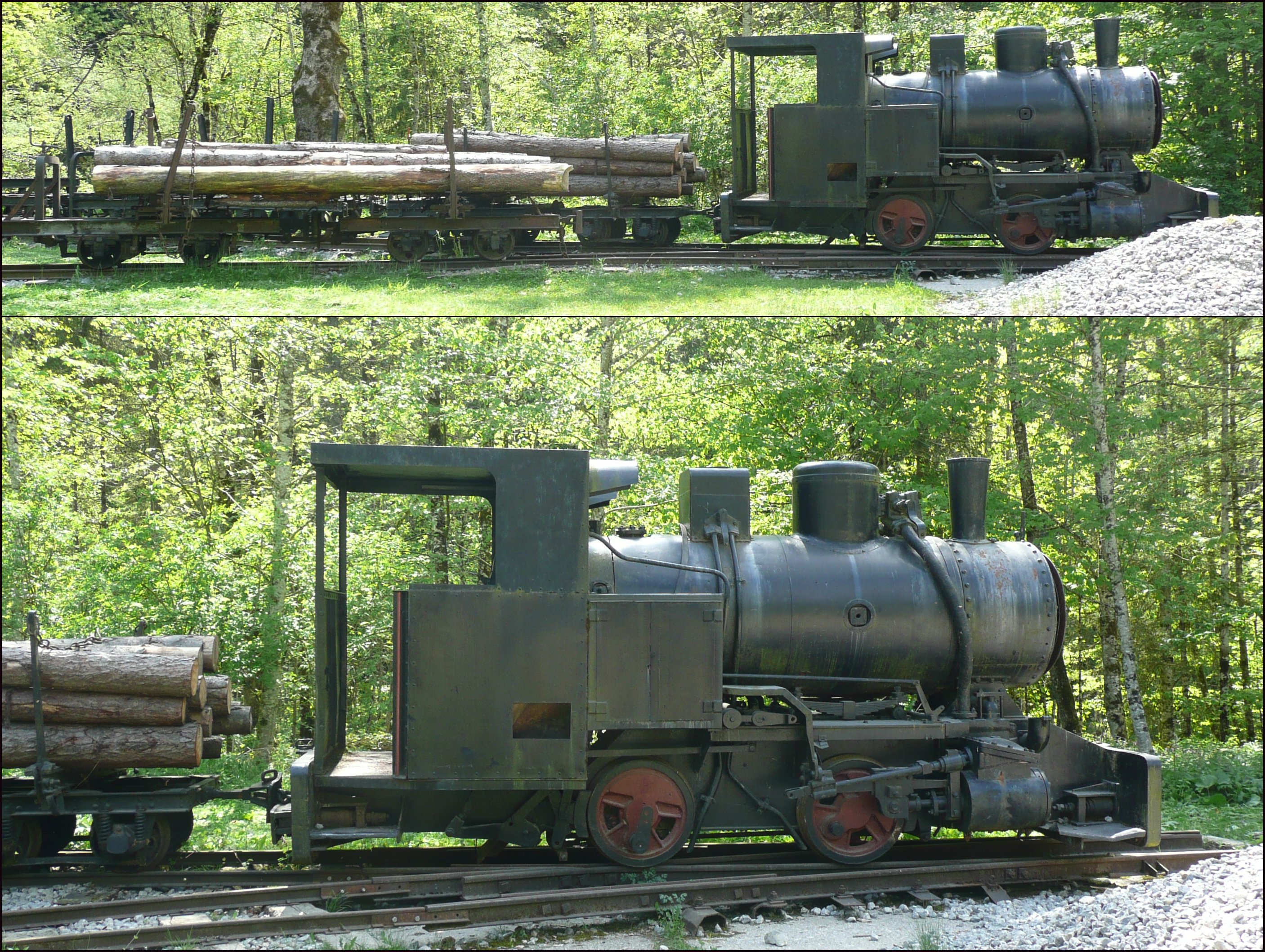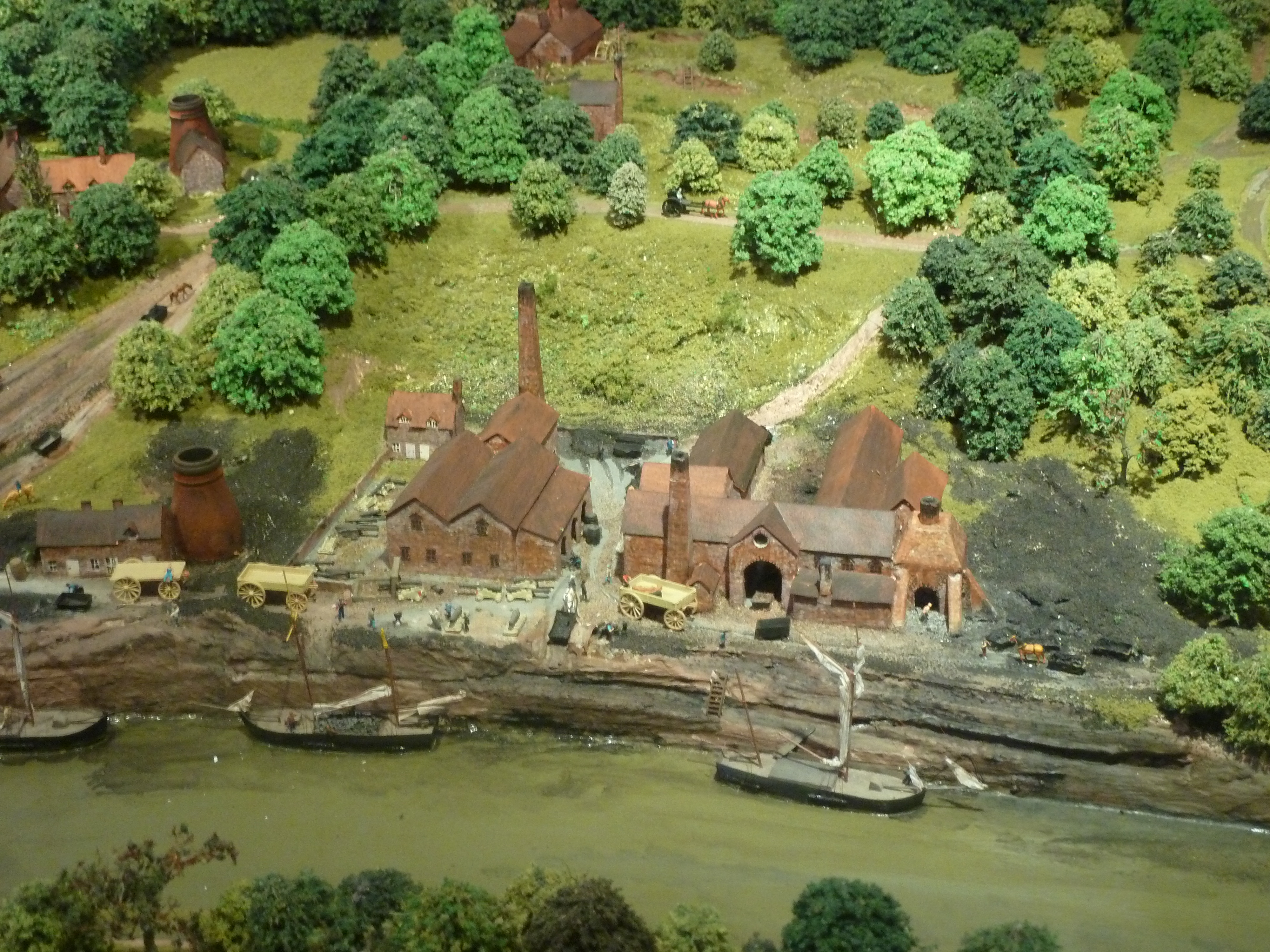|
Waggonway
Wagonways (also spelt Waggonways), also known as horse-drawn railways and horse-drawn railroad consisted of the horses, equipment and tracks used for hauling wagons, which preceded steam-powered railways. The terms plateway, tramway, dramway, were used. The advantage of wagonways was that far bigger loads could be transported with the same power. Ancient systems The earliest evidence is of the 6 to 8.5 km long ''Diolkos'' paved trackway, which transported boats across the Isthmus of Corinth in Greece from around 600 BC. Wheeled vehicles pulled by men and animals ran in grooves in limestone, which provided the track element, preventing the wagons from leaving the intended route. The Diolkos was in use for over 650 years, until at least the 1st century AD. Paved trackways were later built in Roman Egypt. Wooden rails Such an operation was illustrated in Germany in 1556 by Georgius Agricola (image right) in his work De re metallica. This line used "Hund" carts wit ... [...More Info...] [...Related Items...] OR: [Wikipedia] [Google] [Baidu] |
Middleton Railway
The Middleton Railway is the world's oldest continuously working railway, situated in the English city of Leeds. It was founded in 1758 and is now a heritage railway, run by volunteers from The Middleton Railway Trust Ltd. since 1960. The railway operates passenger services at weekends and on public holidays over approximately of track between its headquarters at Moor Road, in Hunslet, and Park Halt, on the outskirts of Middleton Park. Origins: Middleton colliery Coal has been worked in Middleton since the 13th century, from bell pits, gin pits and later "day level" or adits. Anne Leigh, heiress to the Middleton Estates, married Ralph Brandling from Felling near Gateshead on the River Tyne. They lived in Gosforth and left running of the Middleton pits to agents. Charles Brandling was their successor. In 1754, Richard Humble, from Tyneside, was his agent. Brandling was in competition with the Fentons in Rothwell who were able to transport coal into Leeds by river, put ... [...More Info...] [...Related Items...] OR: [Wikipedia] [Google] [Baidu] |
Huntingdon Beaumont
Huntingdon Beaumont (c.1560–1624) was an English coal mining entrepreneur who built two of the earliest wagonways in England for trans-shipment of coal. He was less successful as a businessman and died having been imprisoned for debt. Beaumont was the youngest of four sons born to Sir Nicholas Beaumont and his wife Ann (Saunders). They were an aristocratic family in the English East Midlands. There were several branches to the Beaumont dynasty and this was the one based at Coleorton in Leicestershire. He was therefore of gentleman status in the formal Elizabethan sense. The family owned coal bearing lands and worked them. Beaumont was involved in this coal working and eventually he began working in his own right in the Nottingham area. In 1603/04, during his partnership with Sir Percival Willoughby, Lord of the Wollaton Manor, Beaumont constructed the Wollaton Wagonway. 21st century research has established that this is not the world's first wagonway with edged rails, but the e ... [...More Info...] [...Related Items...] OR: [Wikipedia] [Google] [Baidu] |
Wagonway
Wagonways (also spelt Waggonways), also known as horse-drawn railways and horse-drawn railroad consisted of the horses, equipment and tracks used for hauling wagons, which preceded Steam locomotive, steam-powered rail transport, railways. The terms plateway, tramway (industrial), tramway, dramway, were used. The advantage of wagonways was that far bigger loads could be transported with the same power. Ancient systems The earliest evidence is of the 6 to 8.5 km long ''Diolkos'' paved trackway, which transported boats across the Isthmus of Corinth in Greece from around 600 BC. Wheeled vehicles pulled by men and animals ran in grooves in limestone, which provided the track element, preventing the wagons from leaving the intended route. The Diolkos was in use for over 650 years, until at least the 1st century AD. Paved trackways were later built in Roman Egypt. Wooden rails Such an operation was illustrated in Germany in 1556 by Georgius Agricola (image right) in his ... [...More Info...] [...Related Items...] OR: [Wikipedia] [Google] [Baidu] |
Rail Transport
Rail transport (also known as train transport) is a means of transport that transfers passengers and goods on wheeled vehicles running on rails, which are incorporated in tracks. In contrast to road transport, where the vehicles run on a prepared flat surface, rail vehicles ( rolling stock) are directionally guided by the tracks on which they run. Tracks usually consist of steel rails, installed on sleepers (ties) set in ballast, on which the rolling stock, usually fitted with metal wheels, moves. Other variations are also possible, such as "slab track", in which the rails are fastened to a concrete foundation resting on a prepared subsurface. Rolling stock in a rail transport system generally encounters lower frictional resistance than rubber-tyred road vehicles, so passenger and freight cars (carriages and wagons) can be coupled into longer trains. The operation is carried out by a railway company, providing transport between train stations or freight customer ... [...More Info...] [...Related Items...] OR: [Wikipedia] [Google] [Baidu] |
Tramway (industrial)
Tramways are lightly laid rail transport, railways, sometimes with the wagons or carriages moved without locomotives. Because individual tramway infrastructure is not intended to carry the weight of typical standard-gauge railway equipment, the tramways over which they operate may be built from less substantial materials. Tramways can exist in many forms; sometimes just tracks temporarily placed on the ground to transport materials around a factory, mine or quarry. Many, if not most, use narrow-gauge railway technology. The trains can be manually pushed by hand, pulled by animals (especially horses and mules), cable hauled by a stationary engine, or use small, light locomotives. The term is not in use in North America but in common use in the United Kingdom, and elsewhere, where British Railway terminology and practices had large influences on management practices, terminology, and railway cultures such as Australia, New Zealand, and those parts of Asia that consulted with Bri ... [...More Info...] [...Related Items...] OR: [Wikipedia] [Google] [Baidu] |
Wollaton Wagonway
The Wollaton Wagonway (or Waggonway), built between October 1603 and 1604 in the East Midlands of England by Huntingdon Beaumont in partnership with Sir Percival Willoughby, has sometimes been credited as the world's first ''overground'' wagonway and therefore regarded as a significant step in the development of railways. Its primacy has been recently questioned because of a wagonway built at Prescot, near Liverpool, sometime around 1600 and possibly as early as 1594. Owned by Philip Layton, this line carried coal from a pit near Prescot Hall to a terminus about half a mile away. Also, a wagonway at Broseley in Shropshire was probably earlier. The wagonway was the earliest form of railway. Although modern historians are uncertain as to whether it evolved gradually or was invented at a particular time, it is known that, between the Autumn of 1603 and 1 October 1604, a wagonway had been built near Nottingham, by Huntingdon Beaumont who was the partner of Sir Percival Willoughby, th ... [...More Info...] [...Related Items...] OR: [Wikipedia] [Google] [Baidu] |
Keswick, Cumbria
Keswick ( ) is a market town and civil parishes in England, civil parish in the Allerdale Borough in Cumbria, England. Historic counties of England, Historically, until 1974, it was part of Cumberland. It lies within the Lake District National Park, Keswick is just north of Derwentwater and is from Bassenthwaite Lake. It had a population of 5,243 at the United Kingdom census, 2011, 2011 census. There is evidence of Prehistoric Cumbria, prehistoric occupation of the area, but the first recorded mention of the town dates from the 13th century, when Edward I of England granted a Royal charter, charter for Keswick's market, which has maintained a continuous 700-year existence. The town was an important Coal mining in the United Kingdom, mining area, and from the 18th century has been known as a holiday centre; tourism has been its principal industry for more than 150 years. Its features include the Moot Hall, Keswick, Moot Hall; a modern theatre, the Theatre by the Lake; one of Br ... [...More Info...] [...Related Items...] OR: [Wikipedia] [Google] [Baidu] |
Leeds
Leeds () is a city and the administrative centre of the City of Leeds district in West Yorkshire, England. It is built around the River Aire and is in the eastern foothills of the Pennines. It is also the third-largest settlement (by population) in England, after London and Birmingham. The city was a small manorial borough in the 13th century and a market town in the 16th century. It expanded by becoming a major production centre, including of carbonated water where it was invented in the 1760s, and trading centre (mainly with wool) for the 17th and 18th centuries. It was a major mill town during the Industrial Revolution. It was also known for its flax industry, iron foundries, engineering and printing, as well as shopping, with several surviving Victorian era arcades, such as Kirkgate Market. City status was awarded in 1893, a populous urban centre formed in the following century which absorbed surrounding villages and overtook the nearby York population. It is locate ... [...More Info...] [...Related Items...] OR: [Wikipedia] [Google] [Baidu] |
Shropshire
Shropshire (; alternatively Salop; abbreviated in print only as Shrops; demonym Salopian ) is a landlocked historic county in the West Midlands region of England. It is bordered by Wales to the west and the English counties of Cheshire to the north, Staffordshire to the east, Worcestershire to the southeast, and Herefordshire to the south. A unitary authority of the same name was created in 2009, taking over from the previous county council and five district councils, now governed by Shropshire Council. The borough of Telford and Wrekin has been a separate unitary authority since 1998, but remains part of the ceremonial county. The county's population and economy is centred on five towns: the county town of Shrewsbury, which is culturally and historically important and close to the centre of the county; Telford, which was founded as a new town in the east which was constructed around a number of older towns, most notably Wellington, Dawley and Madeley, which is today th ... [...More Info...] [...Related Items...] OR: [Wikipedia] [Google] [Baidu] |
Jackfield
Jackfield is a village in Shropshire, England, lying on the south bank of River Severn in the Ironbridge Gorge, downstream from Ironbridge. Like many of the settlements in the area, it is notable for its place in the Industrial Revolution. History Jackfield grew as a river port for nearby Broseley and Benthall (which are situated high above the Severn) and is a notable part of the area's famous early industrial activity. The first railway in Shropshire and second in Great Britain was built here – by 1605, the lord of the manor of Broseley, James Clifford, had constructed a wooden railway (usually termed a wagonway) from his coal mines to the river at Jackfield. It has recently been suggested that this is older than the Wollaton Wagonway which is generally thought to be the earliest such wagonway. There was a pottery here from at least 1634 and corn mills existed along the stream that flowed into the river. The wooden railway also followed the route of this stream, which ... [...More Info...] [...Related Items...] OR: [Wikipedia] [Google] [Baidu] |
Broseley
Broseley is a market town in Shropshire, England, with a population of 4,929 at the 2011 Census and an estimate of 5,022 in 2019. The River Severn flows to its north and east. The first The Iron Bridge, iron bridge in the world was built in 1779 across the Severn, linking Broseley with Coalbrookdale and Madeley, Shropshire, Madeley. This contributed to the Industrial Revolution, early industrial development in the Ironbridge Gorge, which is now part of a World Heritage Site. History There was a settlement existing in 1086, listed as Bosle in the Domesday Book of that year, when it lay in the Hundred of Alnodestreu. That jurisdiction was dismembered in the time of King Henry I of England, Henry I, when Broseley and Willey, Shropshire, Willey were reassigned to the Munslow (hundred), Munslow Hundred. Finally they were transferred to the Liberty of Wenlock on its creation in the time of King Richard I of England, Richard I. The place name appears as ''Burewardeslega'' in 1177, and ... [...More Info...] [...Related Items...] OR: [Wikipedia] [Google] [Baidu] |
England
England is a country that is part of the United Kingdom. It shares land borders with Wales to its west and Scotland to its north. The Irish Sea lies northwest and the Celtic Sea to the southwest. It is separated from continental Europe by the North Sea to the east and the English Channel to the south. The country covers five-eighths of the island of Great Britain, which lies in the North Atlantic, and includes over 100 smaller islands, such as the Isles of Scilly and the Isle of Wight. The area now called England was first inhabited by modern humans during the Upper Paleolithic period, but takes its name from the Angles, a Germanic tribe deriving its name from the Anglia peninsula, who settled during the 5th and 6th centuries. England became a unified state in the 10th century and has had a significant cultural and legal impact on the wider world since the Age of Discovery, which began during the 15th century. The English language, the Anglican Church, and Engli ... [...More Info...] [...Related Items...] OR: [Wikipedia] [Google] [Baidu] |




.jpg)


